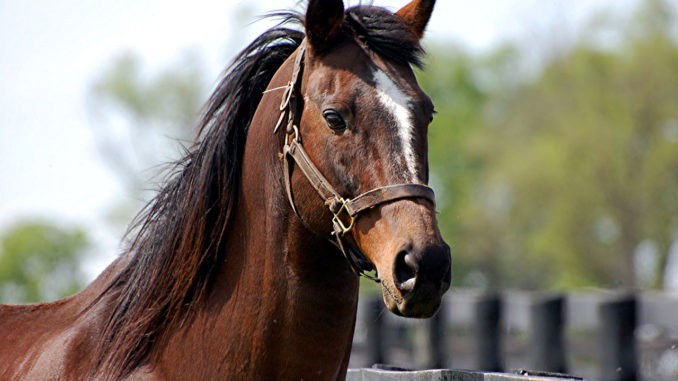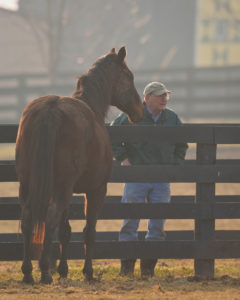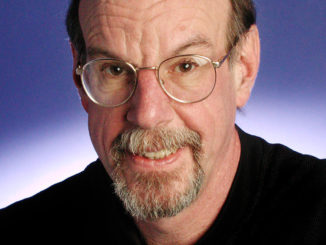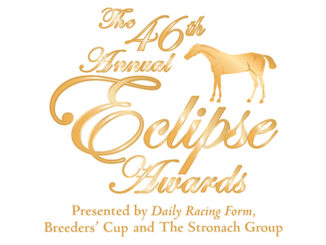
It’s a sign of these strange and unprecedented times that the only scheduled stakes in the entire country on Saturday will be the $75,000 Sunshine Forever at Gulfstream Park.
Stranger still is that Gulfstream would host a race in honor of the champion grass runner. Sunshine Forever lost the only two starts he ever made at the track and was bred and raced by John W. Galbreath, who for a few years in the 1970s was at the helm of Gulfstream’s cross-town rival Hialeah Park.
Nonetheless, Sunshine Forever deserves to be remembered. Not only was he the final champion to sport the famous tan and brown silks of Galbreath’s Darby Dan Farm, but his Eclipse Award-winning campaign in 1988 was, by today’s standards, a remarkably ambitious one for a 3-year-old.
Appropriately born in a small Ohio village called Derby in 1897, Galbreath built a fortune in real estate from which he invested in two of his great loves: baseball and Thoroughbreds.
For nearly four decades Galbreath was the principal owner of the Pittsburgh Pirates, who captured the World Series for him in 1960, 1971, and 1979. That era also saw Galbreath reach the pinnacle of racing both at home and overseas.
Galbreath won the Kentucky Derby twice, in 1963 with Chateaugay (who also won the Belmont) and in 1967 with Proud Clarion. He also reached the Preakness (G1) and Belmont (G1) winner’s circles in 1974 with Little Current.
Galbreath’s interest in European racing was also absolute. Several years after importing Italian superhorse *Ribot to stand at Darby Dan, Galbreath became the first owner ever to win both the Kentucky Derby and Epsom Derby when Roberto (named for Pirates star Roberto Clemente) captured the English classic in 1972.
The year 1985 proved a pivotal one for Galbreath. One month after selling his family’s interest in the Pirates, the 88-year-old celebrated a victory by his 3-year-old colt Proud Truth in the second running of the Breeders’ Cup Classic (G1) at Aqueduct. And earlier that year, on March 14, Sunshine Forever was born.

By Roberto, Sunshine Forever was out of the stakes-placed mare Outward Sunshine, who was sired by Graustark. Perhaps the most talented and brilliant colt Galbreath ever owned, Graustark unfortunately sustained a career-ending injury prior to the 1966 Triple Crown, a series he might have been favored to sweep. Like Proud Truth, Sunshine Forever was put under the care of trainer John Veitch.
While there was much in his pedigree to suggest he could potentially handle any surface, it was evident early on Sunshine Forever would prefer turf — and distance. At age 2, he was unplaced in three of four dirt attempts, but missed breaking his maiden by a neck in his turf debut going 1 1/16 miles at Belmont.
Still a maiden at the start of his 3-year-old campaign, Sunshine Forever swiftly put that label to rest when he won both a maiden and an allowance on the turf at Aqueduct within a two-week span in late April and early May. Aboard for both was Angel Cordero Jr., the only rider Sunshine Forever would have the rest of his career.
Stakes company soon beckoned for Sunshine Forever. Although unsuccessful when a close second to Posen in the Saranac (G3) at Belmont Park, during which he was forced to check, he returned the favor against that rival when taking the Hill Prince (G3) by six lengths following an interim allowance win.
Sunshine Forever’s next race, on July 10, was a bittersweet one. Although no longer run, the 1 1/4-mile Lexington (G2) was at the time the leading 3-year-old grass stakes of the Belmont spring meet. Sunshine Forever won that, too, by 1 3/4 lengths as the 3-5 favorite. Sadly, it was the last stakes victory for Galbreath, who died 10 days later at his farm in Ohio at age 90.
With few significant stakes for his age group to point toward, especially at Grade 1 level, Sunshine Forever embarked on a demanding late summer and fall campaign against older horses. First up was the 1 1/2-mile Sword Dancer H. (G1) at Belmont, in which the sophomore finished second as the even-money favorite between the talented mares Anka Germania and Carotene, the latter a multiple champion in Canada.
Next was a trip to Woodbine, which played host to the Arlington Million (G1) while Arlington Park was undergoing reconstruction following a disastrous 1985 fire. Well backed at just under 4-1, Sunshine Forever ran well to finish third behind French raider Mill Native and last-out United Nations H. (G1) winner Equalize. Finishing a distant seventh was a California-based gelding named Great Communicator.
Having lost no respect for either defeat, Sunshine Forever would go favored in his next three starts. In the span of 29 days Sunshine Forever captured the 1 3/8-mile Man o’ War (G1) at Belmont by a half-length over Pay the Butler, who later won the Japan Cup (G1); the 1 1/2-mile Turf Classic (G1) at Belmont by an impressive 4 3/4 lengths; and finally the 1 1/4-mile Washington D.C. International (G1) at Laurel after staging a remarkable comeback from what appeared certain defeat.
“You could watch a thousand races without seeing a horse display such an indomitable will to win as Sunshine Forever did in the 1988 International,” Andy Beyer would later write in the Washington Post. “When two French horses blew past him as he entered the stretch, Sunshine Forever was left for dead. Bettors could have torn up their tickets on the favorite at that moment, and jockey Angel Cordero Jr. was only hoping to hold on to third place. Everybody gave up but the horse. In midstretch Sunshine Forever seemed to shift gears, surging back at the leaders and winning by a neck.”
“He showed great character,” said Veitch.
The biggest prize of the season, the $2 million Breeders’ Cup Turf (G1) at Churchill Downs over 1 1/2 miles, was two weeks later. Although he would out-finish the favored European filly Indian Skimmer, Sunshine Forever’s win streak was snapped when he finished second, a half-length behind loose-on-the-lead Great Communicator, over a rain-softened course.
Great Communicator later notched a third Grade 1 victory of the 1988 season in the Hollywood Turf Cup (G1), on Christmas Eve, but by then a substantial number of Eclipse Award voters had already turned in their ballots. The vote for champion turf male went Sunshine Forever’s way as he captured all three voting blocs.
The future looked bright as Sunshine Forever turned 4 in 1989, but did not turn out as such. Second to Equalize in the Canadian Turf H. (G3) at Gulfstream in February, he next finished third in the Fort Marcy H. (G3) at Aqueduct in May when failing to overcome a pedestrian pace of :26.20, :52.40, and 1:18 on soft ground. A month later, Sunshine Forever wrenched an ankle while training and was out of action all summer.
“He was at his very peak from the standpoint of fitness when he was hurt,” Veitch told the Fort Lauderdale Sun-Sentinel.
Sunshine Forever’s comeback race, on the final day of September in a Belmont allowance, was highly disappointing as he finished a distant fifth, his first unplaced finish in two years.
“If I wasn’t so old, I’d cry,” Cordero said.
“He was simply not as enthusiastic as he was in the past about training,” Veitch said. “Horses are not unlike humans. They’re smarter as they get older. When he came back he knew what it was all about, and he wasn’t as interested. So the only way to get him back into peak condition was running him.”
Sunshine Forever ran a better race two weeks later, finishing second in 10-furlong overnight handicap at Belmont, and then was wheeled back in eight days for a title defense in the International at Laurel.
“It was a 100 percent improvement, but Angel told me he still wasn’t concentrating,” Veitch told Beyer. “We’re going to solve that by putting blinkers on in the International. I think they’ll make him concentrate on what he’s doing.”
Bettors were cool on that prospect as they sent Sunshine Forever off at odds of 7-1. Second early on behind the eventual winner Caltech, he eventually faded to sixth in the field of 11.
Against the odds, Sunshine Forever made the field of 14 for the Breeders’ Cup Turf at Gulfstream Park. Sent off at 18-1 and racing sans blinkers in what turned out to be his final start, Sunshine Forever raced near the rear of the field much of the way before trailing the pack, 14 1/2 lengths behind the turf-debuting 3-year-old winner Prized.
Although not a great success as a sire either in the U.S. or Japan, where he stood for the better part of a decade, Sunshine Forever nonetheless enjoyed a long life. After being pensioned from stud duty, he returned to Kentucky in 2004 to reside at the Old Friends Equine Retirement Farm. A beloved resident, he was found dead in his paddock on January 7, 2014, at the age of 29.
Not only was Sunshine Forever the last champion for Darby Dan and his Hall of Fame trainer, but in some ways was among the last of a breed. When Sunshine Forever was voted champion turf male, he was the 10th American-based 3-year-old since 1953 to win the honor. In the 32 intervening years only two other American-based 3-year-old males — Itsallgreektome (1990) and Kitten’s Joy (2004) — have earned the title.
Although a one-season wonder more than a Hall of Fame talent, Sunshine Forever’s place in history is secure in multiple respects.



